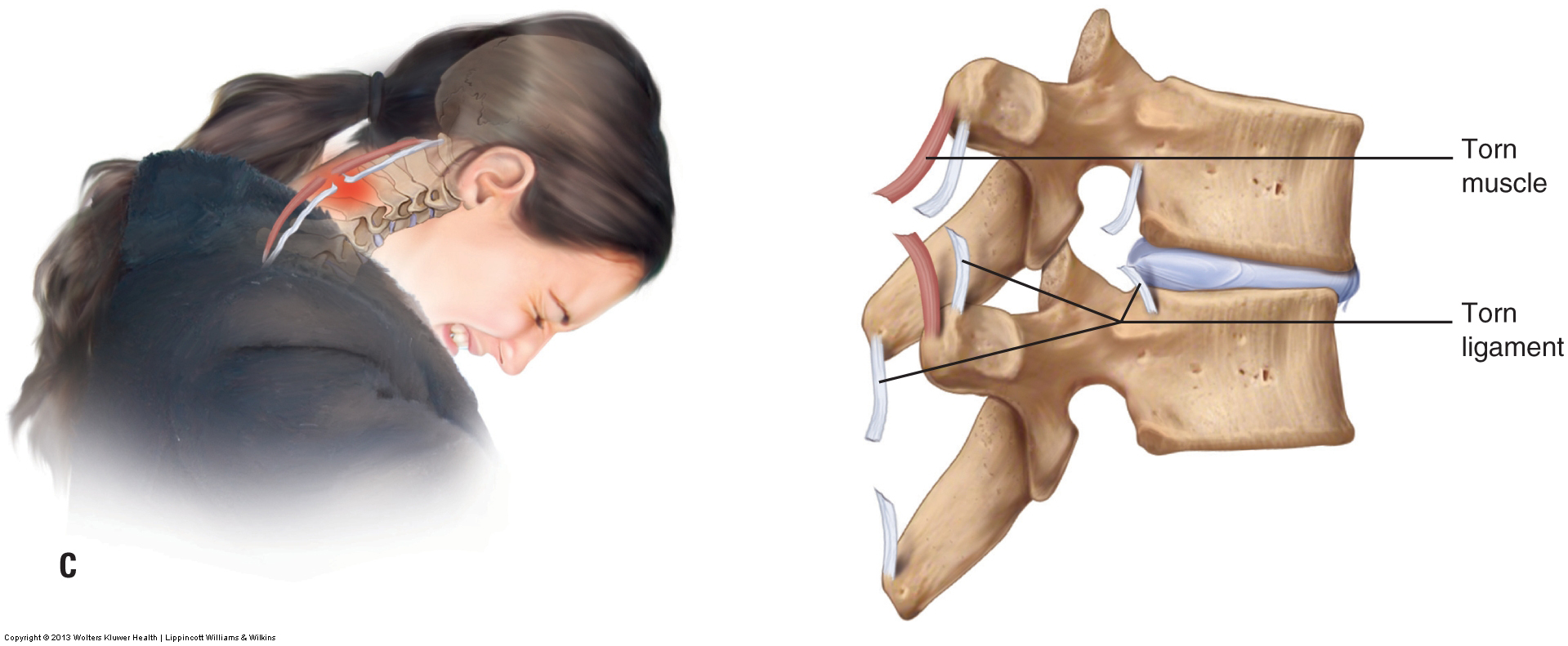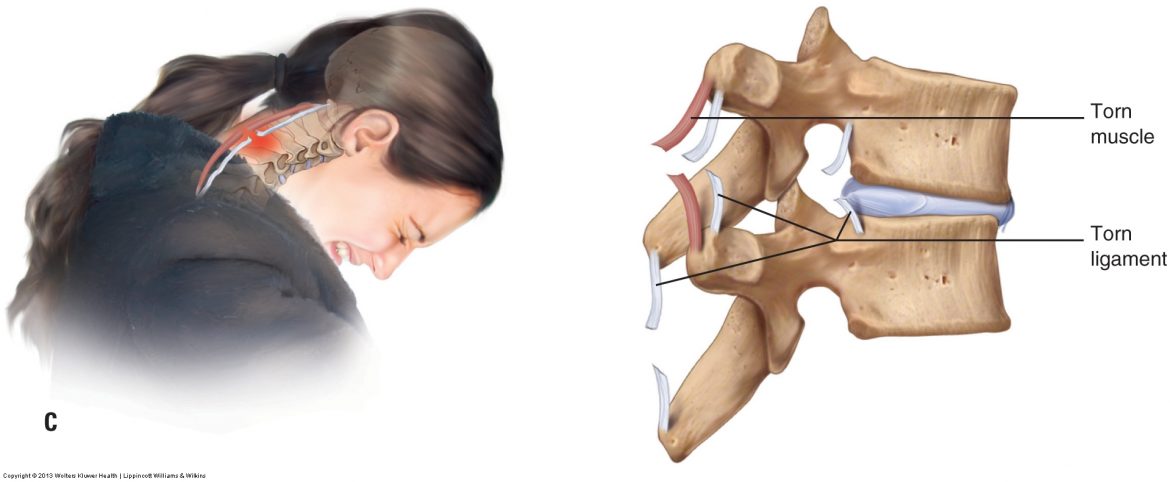Signs and Symptoms
The signs and symptoms of a whiplash injury vary based on the severity of the whiplash, whether it is in the acute or chronic stage, and whether the principal injury is a strain or sprain. A mild whiplash (for example occurring due to a minor car accident) might cause no actual tissue tearing, but simply kick in the muscle spindle reflex, resulting in muscle spasming and pain in the neck as a result of the spasming. Whereas a more severe whiplash can cause marked tearing of muscular and fascial ligamentous tissue, causing inflammation, pain, and protective muscle spasming. Because many of the neck muscles attach onto the occiput and temporal bone, muscle tightness in the neck often results in tension headaches as well.

Whiplash into flexion tearing posterior myofascial tissues. Permission: Joseph E. Muscolino. Advanced Treatment Techniques for the Manual Therapist: Neck (2013).
During the acute stage, inflammation is usually present and generally correlates to the degree of actual tissue damage. The acute stage also involves muscular spasming, which occurs due to the initiation of the muscle spindle reflex due to the overstretching of muscle tissue; initiation of the pain-spasm-pain cycle due to the pain of the injury; and contraction of muscles to stabilize the cervical spine if ligaments have been overstretched and torn. The acute stage is also marked by pain, which can be directly due to the tissue injury, the inflammation, and/or the muscle spasming.
Acute whiplash injuries may also result in dizziness due to irritation of the proprioceptors around the cervical spinal joints and muscles of the neck. Other symptoms might be present if other structures such as intervertebral discs or bones were injured during the whiplash. If referral pain into an upper extremity is present, nerve compression should be suspected. This might be temporarily due to inflammation or might signal the possibility of an injured (bulging or herniated) disc. Upper extremity symptoms can also result from myofascial trigger referral.
In the long run, a whiplash injury may fully resolve and the client/patient might have no symptoms. This usually points to an impact in which no actual tissue damage occurred. However, a whiplash can also result in chronic tightening of musculature if the muscle tightening has become patterned into the nervous system (via neural plasticity). It is especially likely that a chronic whiplash will result in perpetual muscle spasming if the muscle spasming is a compensation for cervical spinal instability (hypermobility) due to overstretched/torn ligaments. Cervical spinal range of motion may be decreased with a chronic whiplash due to muscular spasming or may be increased due to the overstretched/torn spinal ligaments.


